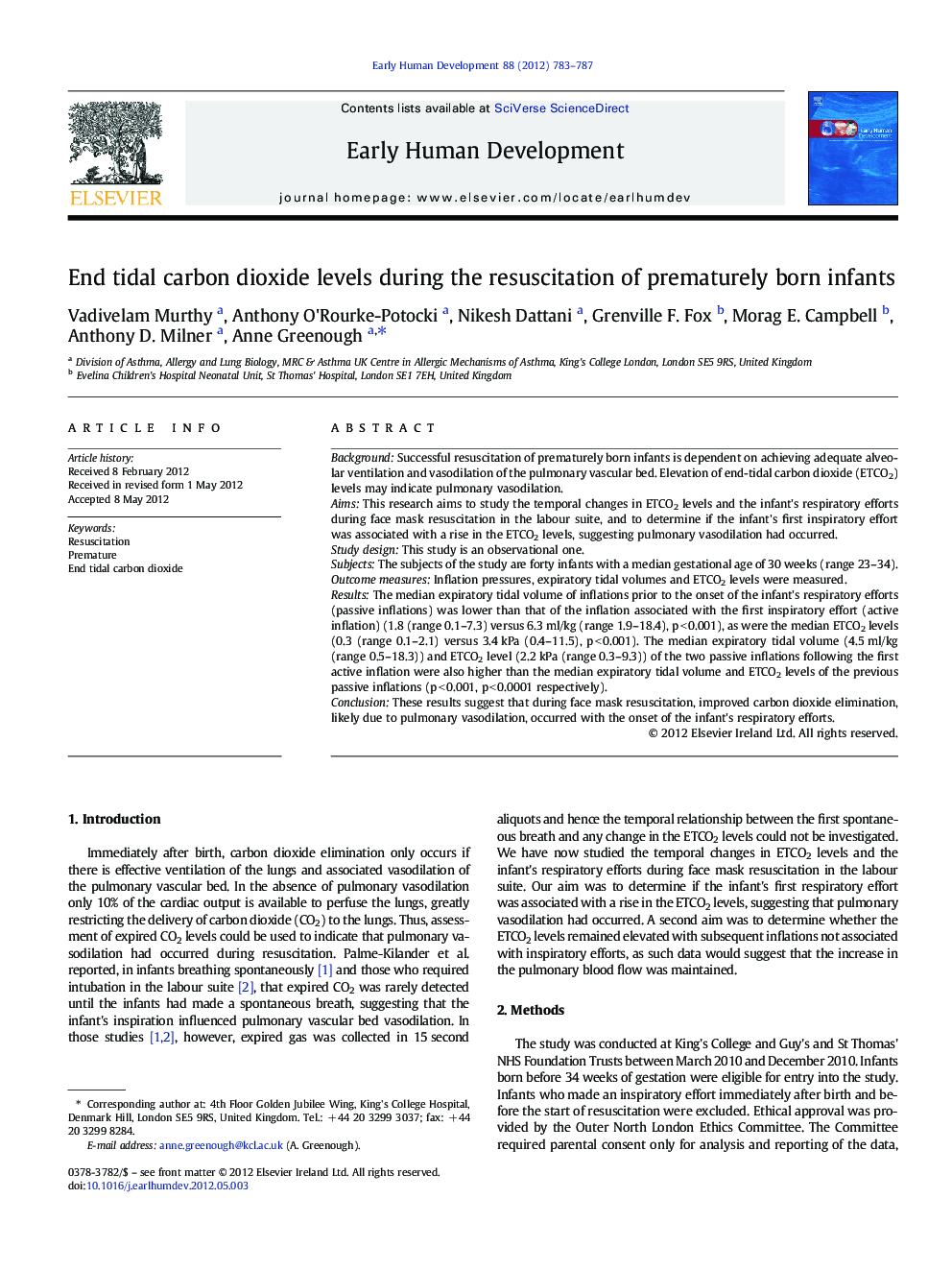| Article ID | Journal | Published Year | Pages | File Type |
|---|---|---|---|---|
| 3918366 | Early Human Development | 2012 | 5 Pages |
BackgroundSuccessful resuscitation of prematurely born infants is dependent on achieving adequate alveolar ventilation and vasodilation of the pulmonary vascular bed. Elevation of end-tidal carbon dioxide (ETCO2) levels may indicate pulmonary vasodilation.AimsThis research aims to study the temporal changes in ETCO2 levels and the infant's respiratory efforts during face mask resuscitation in the labour suite, and to determine if the infant's first inspiratory effort was associated with a rise in the ETCO2 levels, suggesting pulmonary vasodilation had occurred.Study designThis study is an observational one.SubjectsThe subjects of the study are forty infants with a median gestational age of 30 weeks (range 23–34).Outcome measuresInflation pressures, expiratory tidal volumes and ETCO2 levels were measured.ResultsThe median expiratory tidal volume of inflations prior to the onset of the infant's respiratory efforts (passive inflations) was lower than that of the inflation associated with the first inspiratory effort (active inflation) (1.8 (range 0.1–7.3) versus 6.3 ml/kg (range 1.9–18.4), p < 0.001), as were the median ETCO2 levels (0.3 (range 0.1–2.1) versus 3.4 kPa (0.4–11.5), p < 0.001). The median expiratory tidal volume (4.5 ml/kg (range 0.5–18.3)) and ETCO2 level (2.2 kPa (range 0.3–9.3)) of the two passive inflations following the first active inflation were also higher than the median expiratory tidal volume and ETCO2 levels of the previous passive inflations (p < 0.001, p < 0.0001 respectively).ConclusionThese results suggest that during face mask resuscitation, improved carbon dioxide elimination, likely due to pulmonary vasodilation, occurred with the onset of the infant's respiratory efforts.
